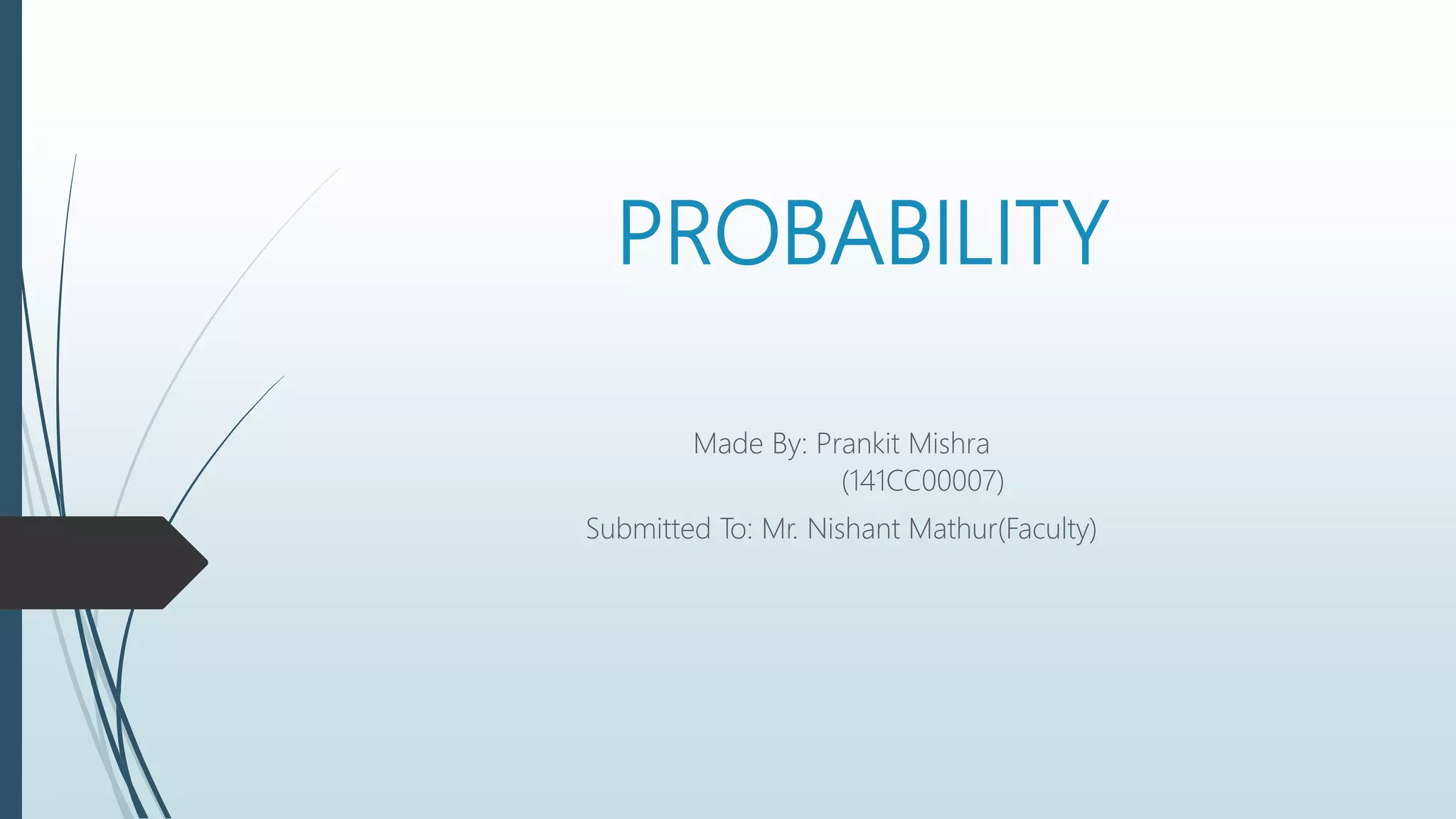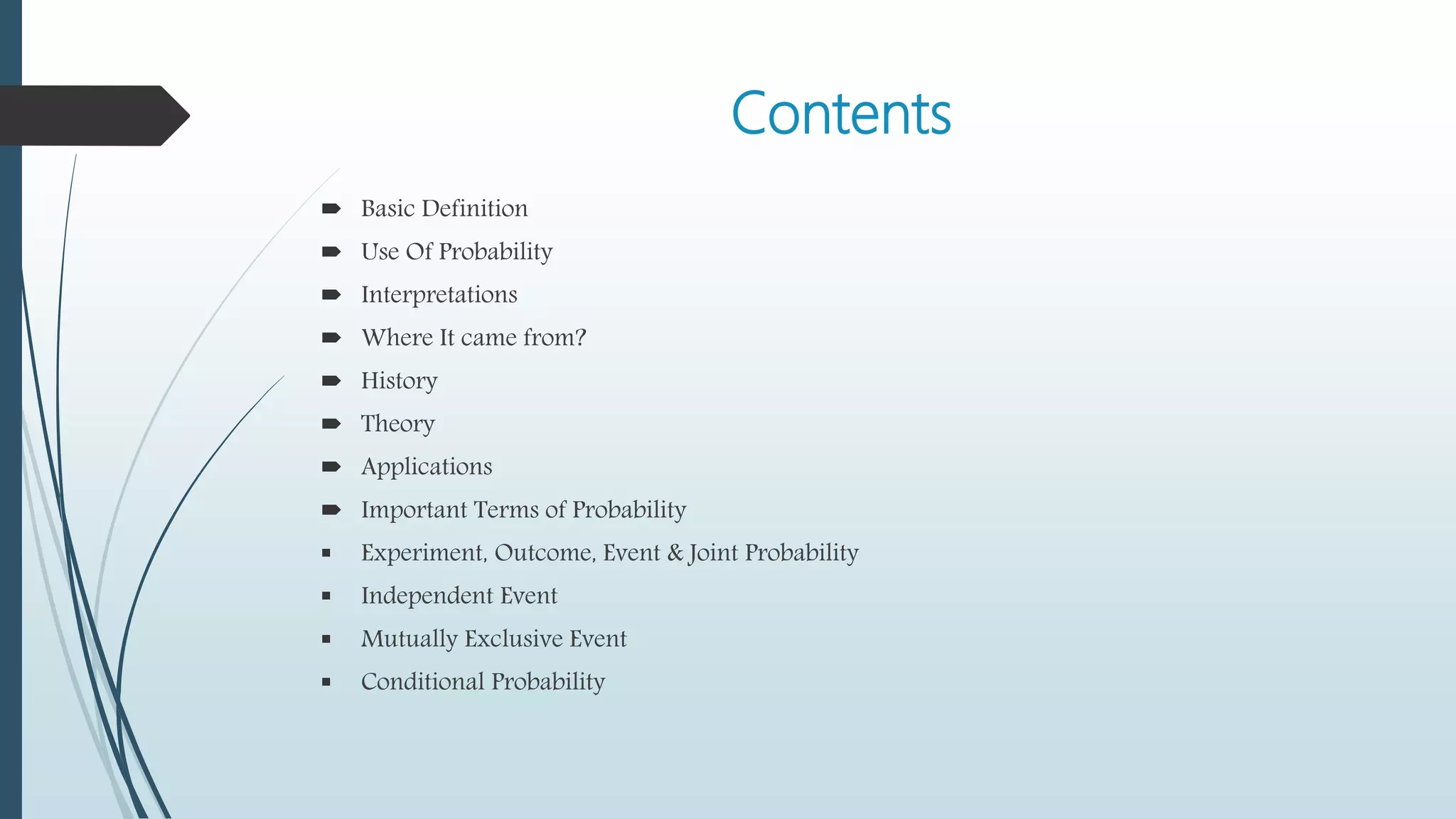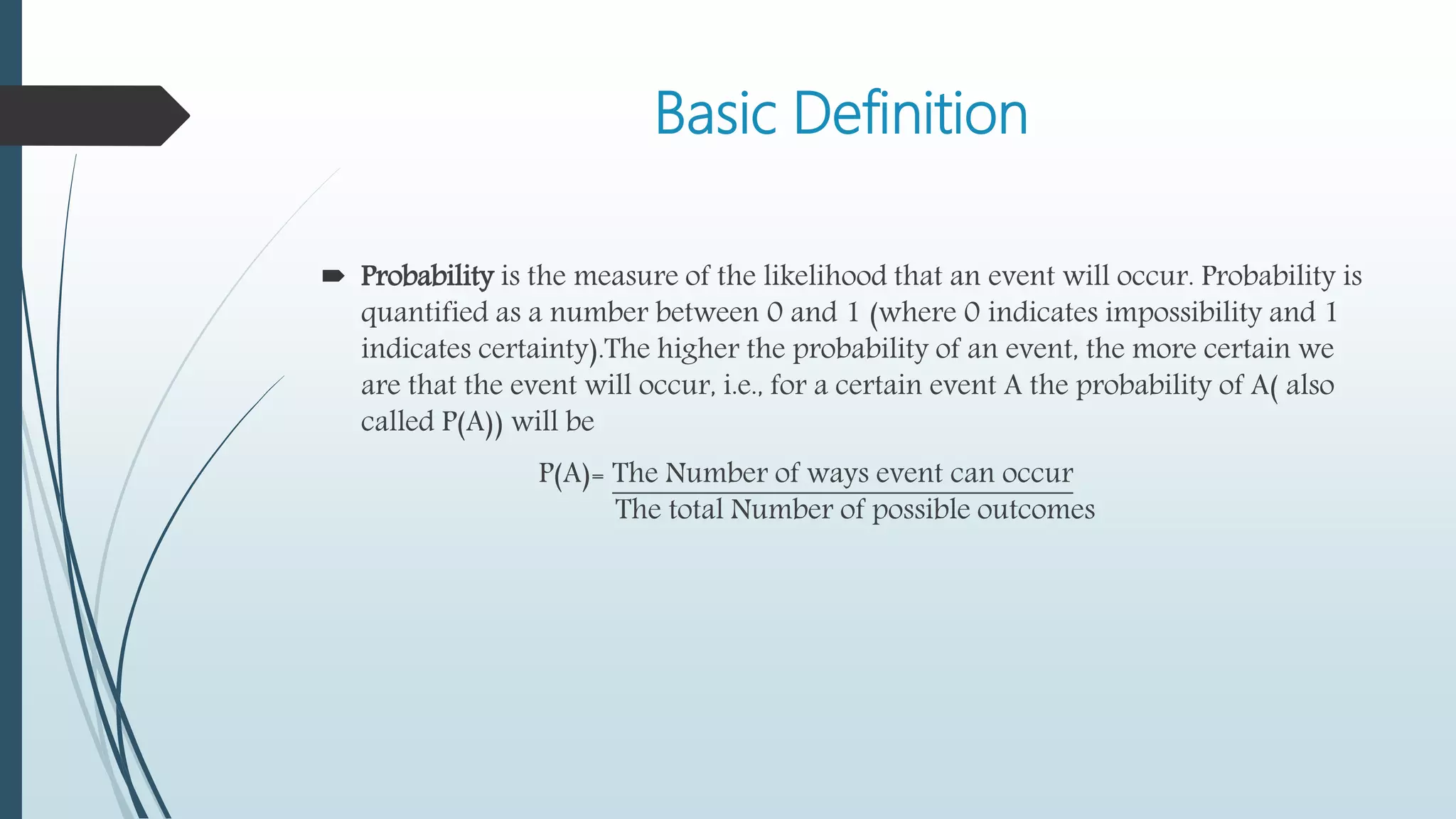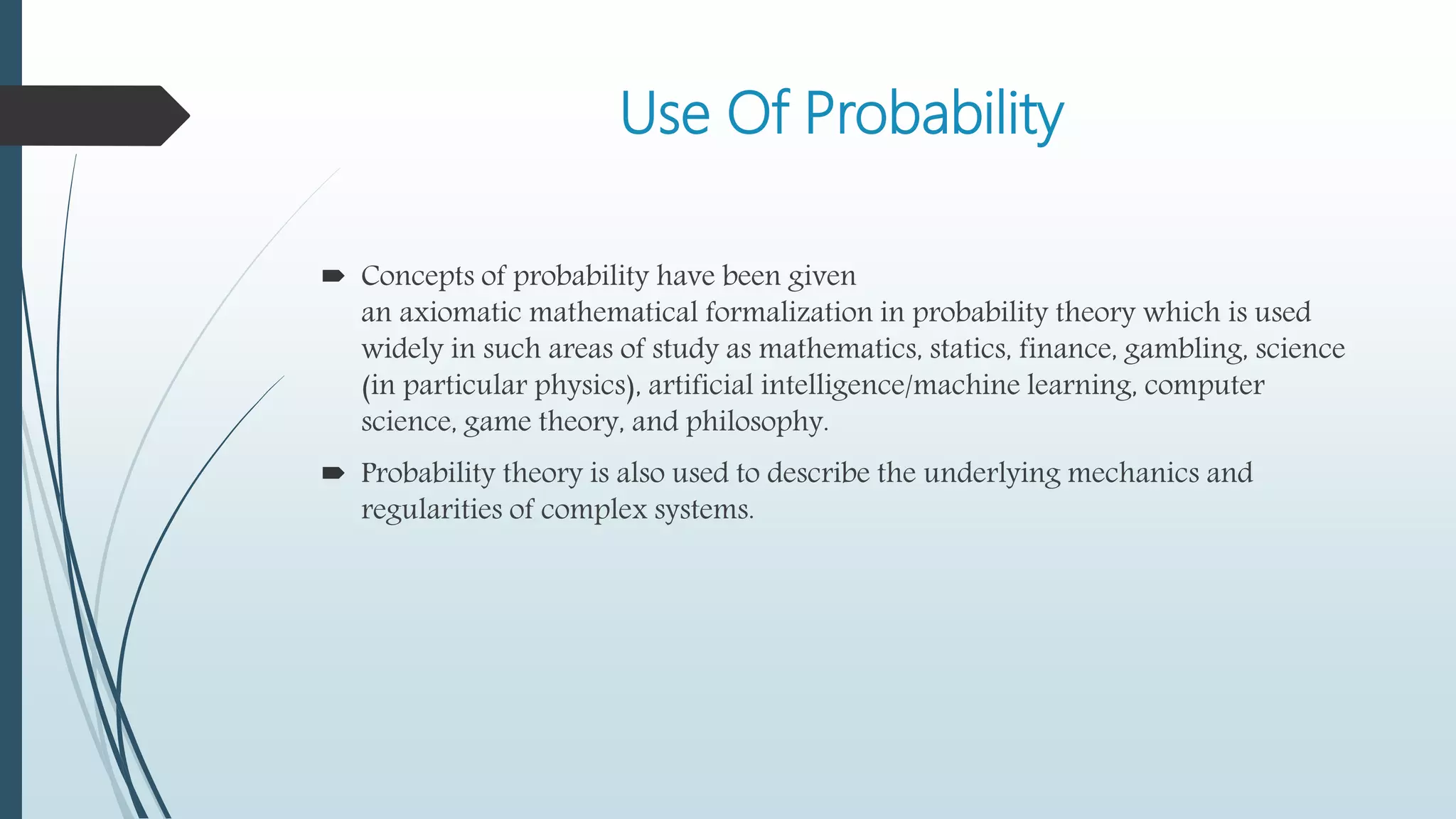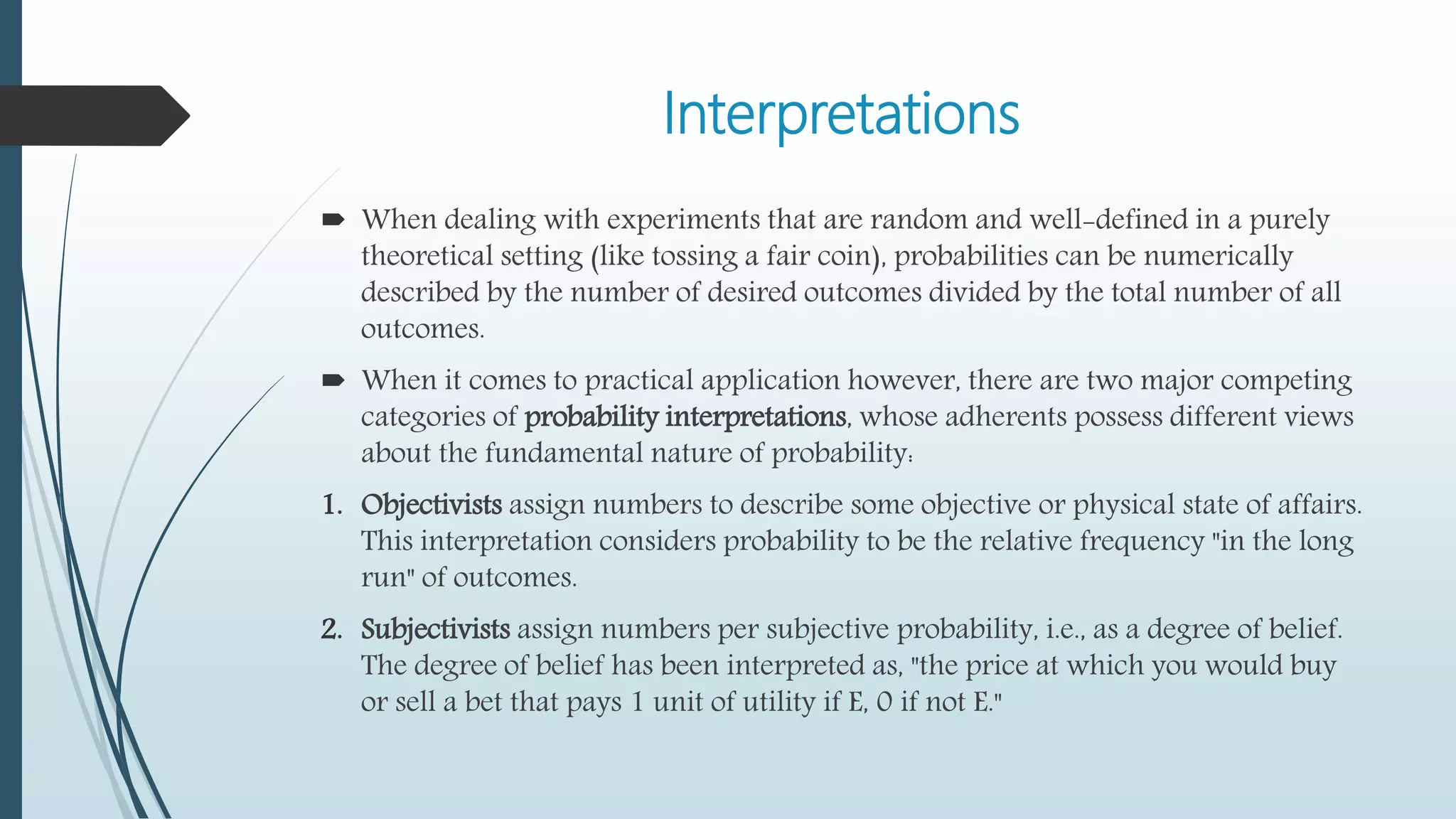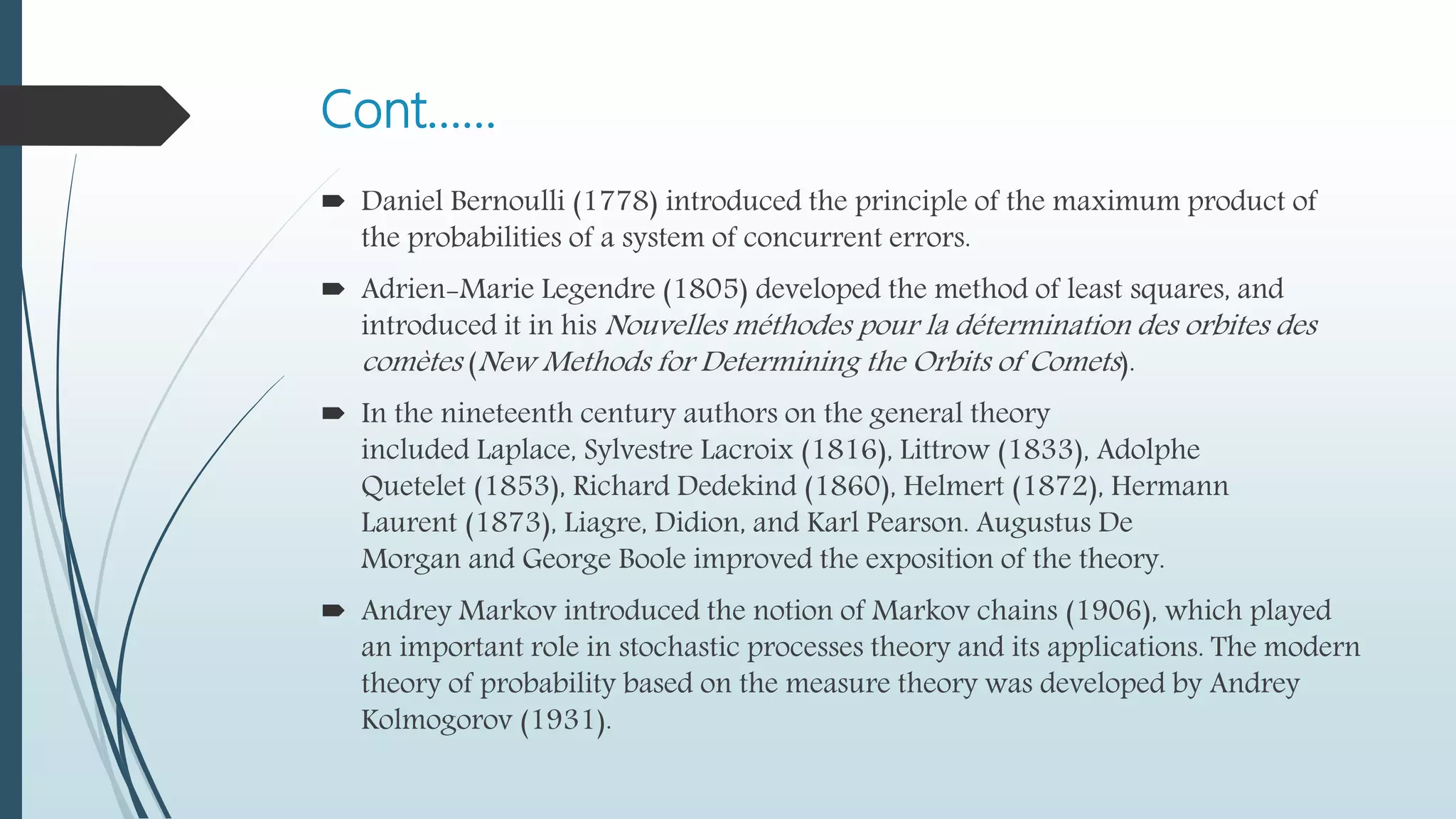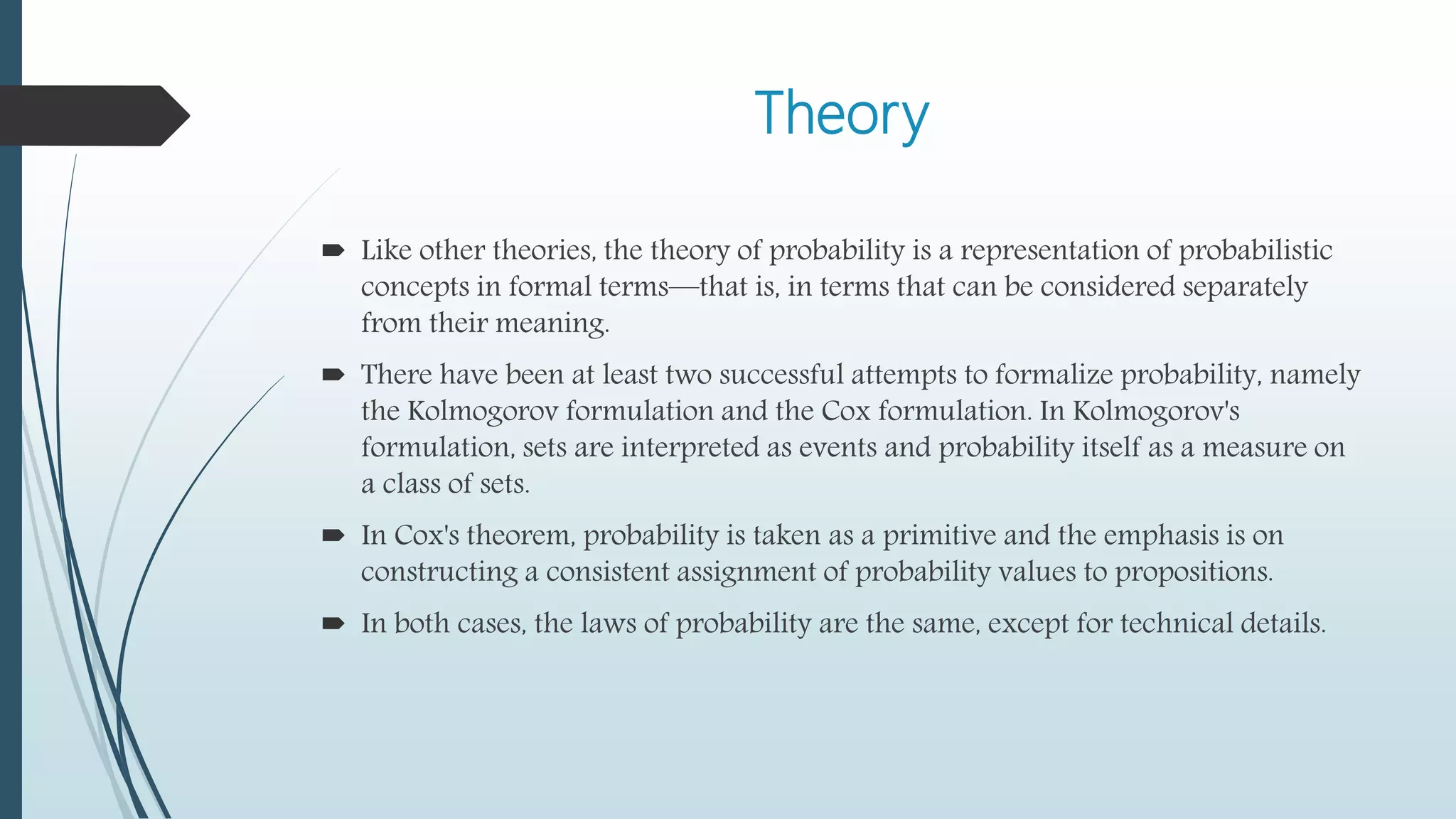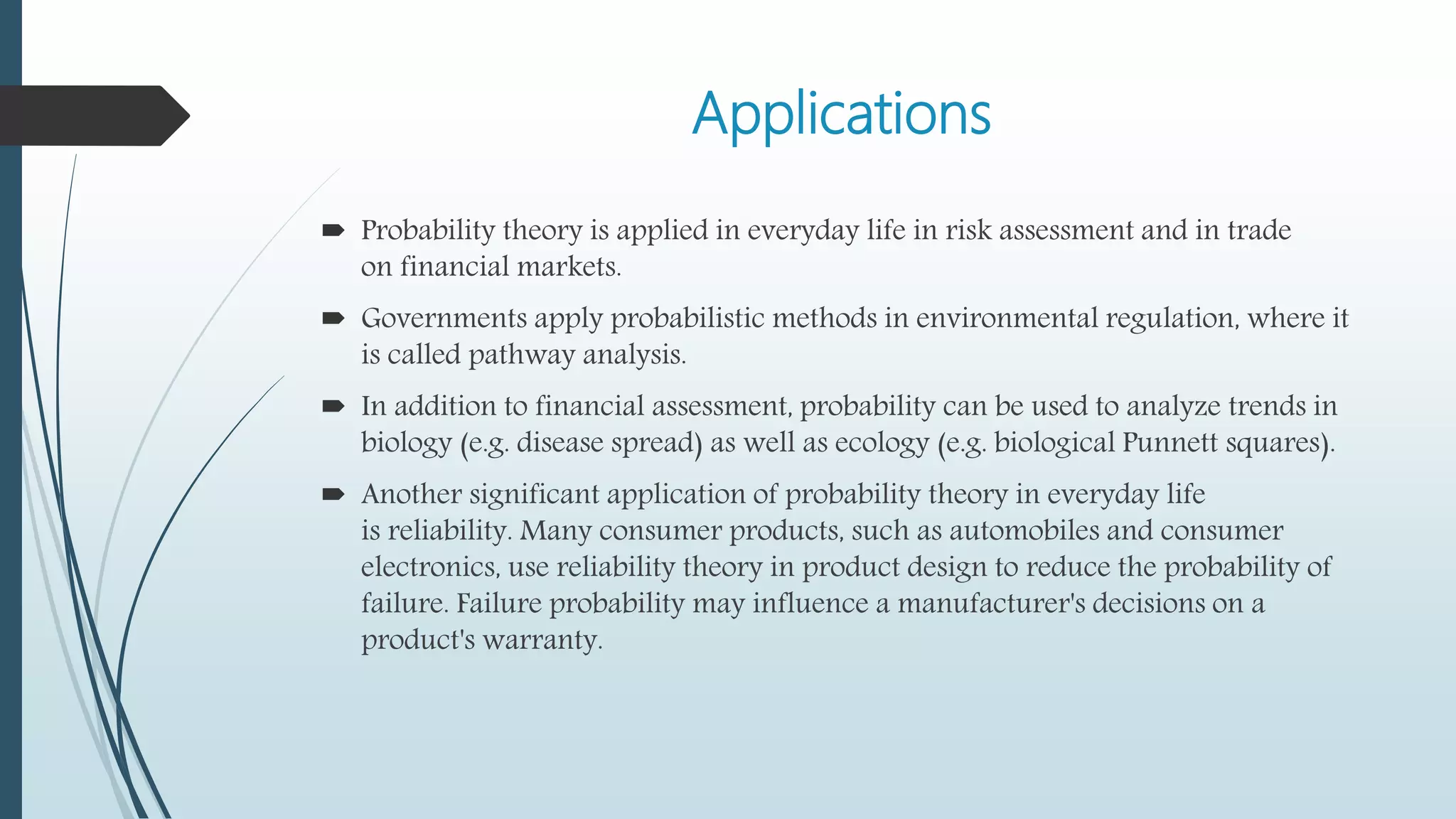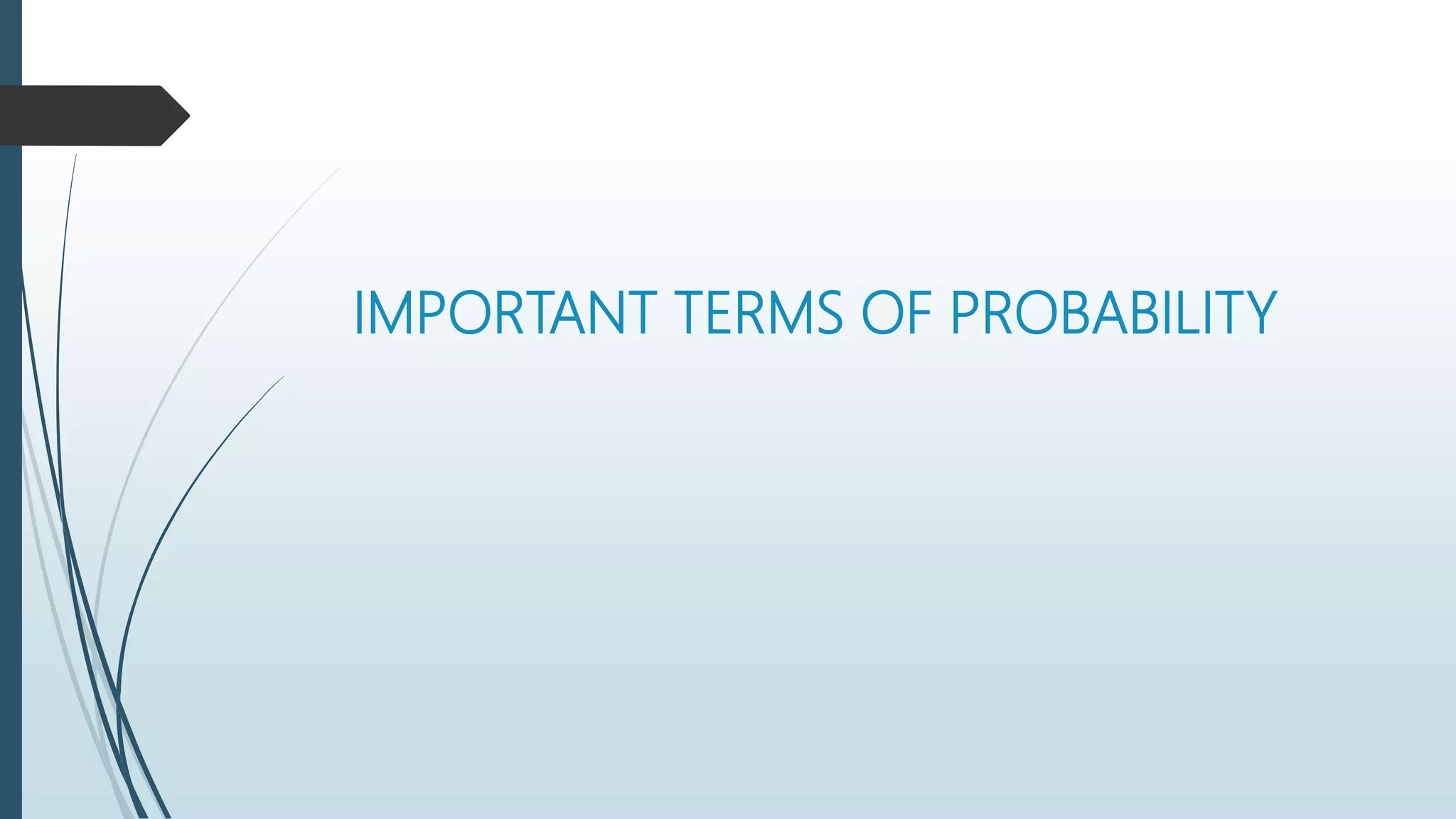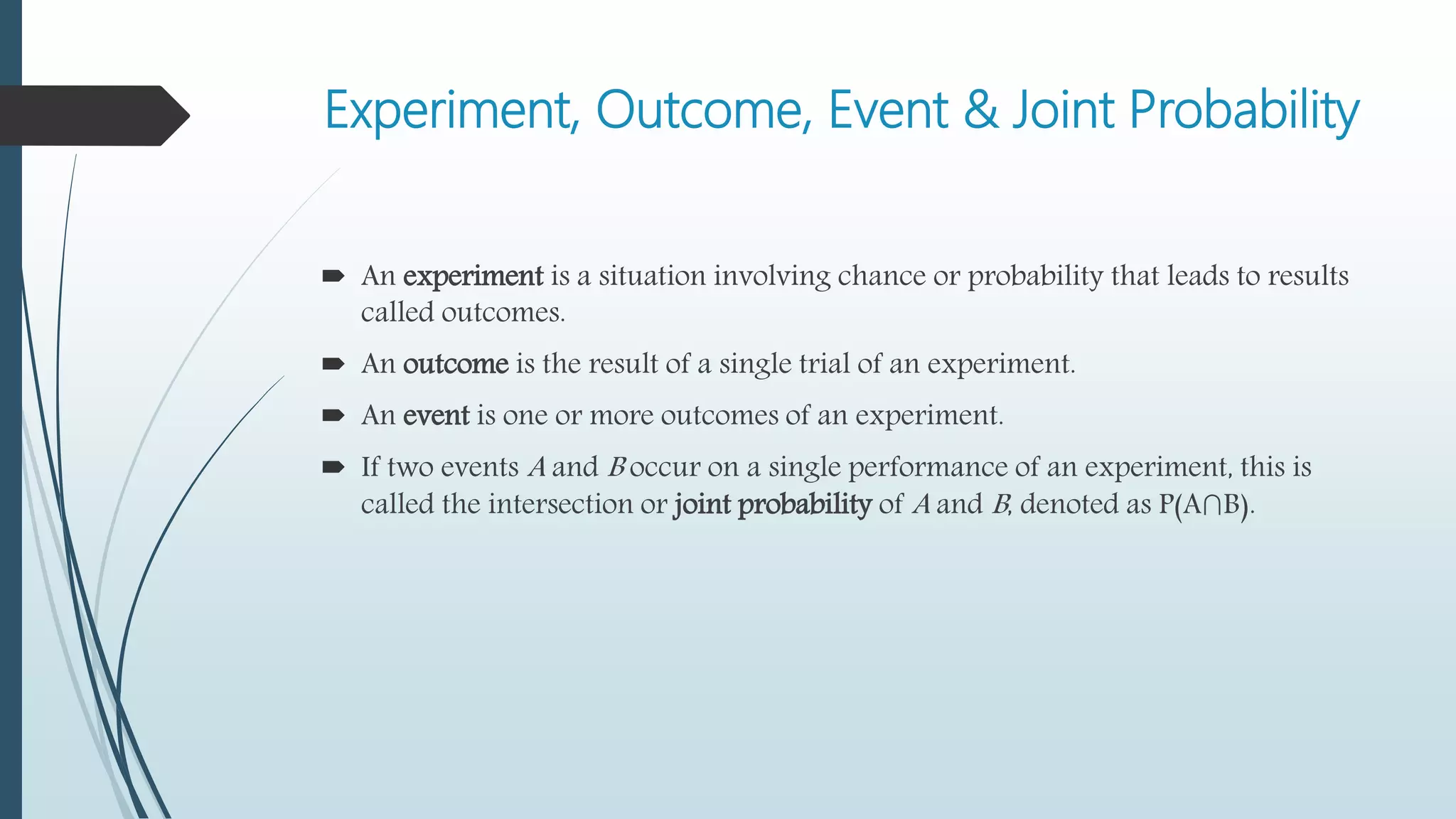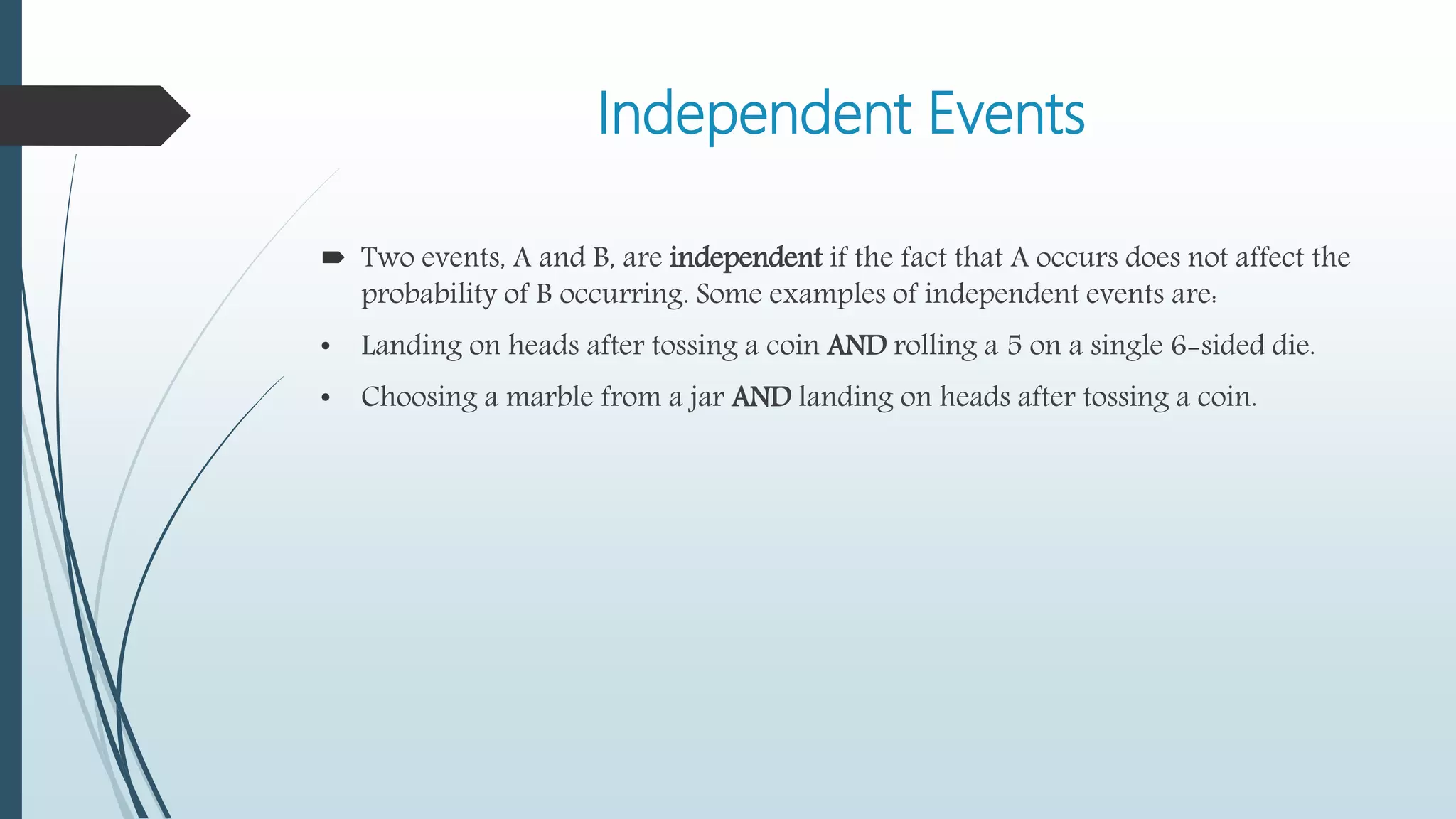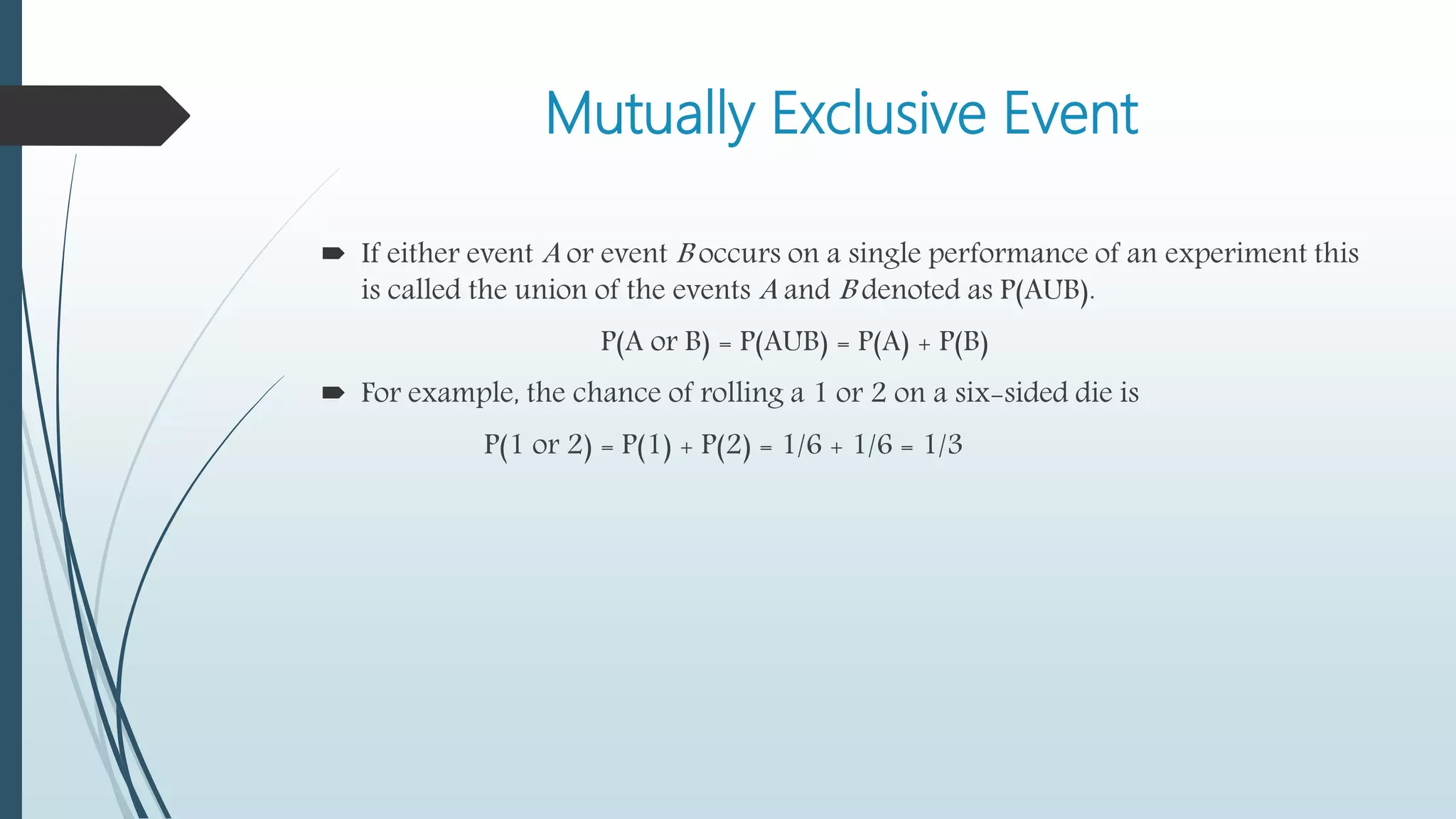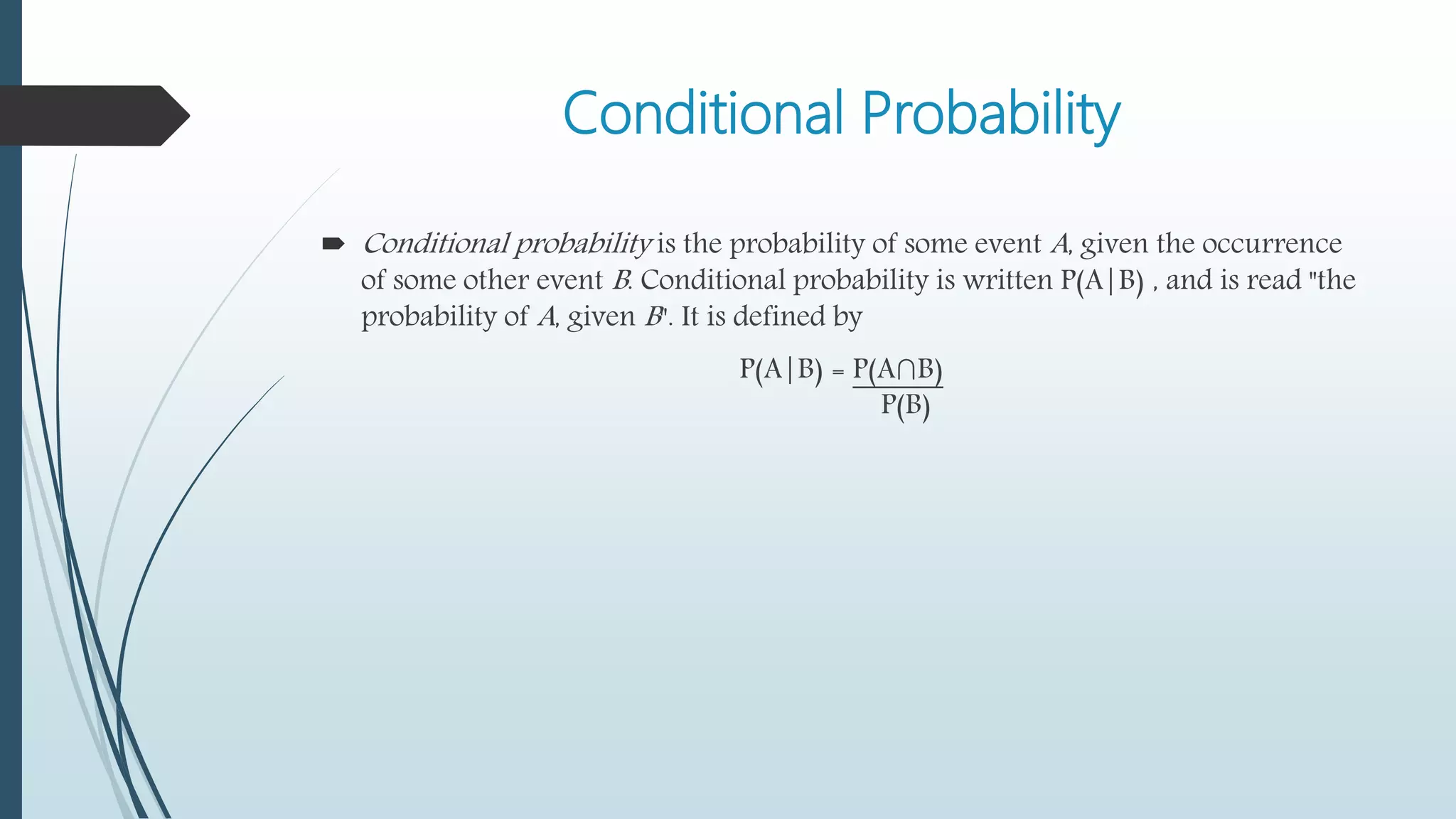This document provides an overview of probability, including its basic definition, history, interpretations, theory, and applications. Probability is defined as a measure between 0 and 1 of the likelihood of an event occurring, where 0 is impossible and 1 is certain. It has been given a mathematical formalization and is used in many fields including statistics, science, and artificial intelligence. Historically, the scientific study of probability began in the 17th century and was further developed by thinkers like Bernoulli, Legendre, and Kolmogorov. Probability can be interpreted objectively based on frequencies or subjectively as degrees of belief. Important probability terms covered include experiments, outcomes, events, joint probability, independent events, mutually exclusive events, and conditional probability.
